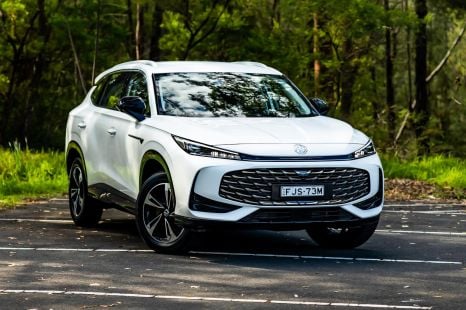

Matt Campbell
2 Months Ago
The Honda CR-V is one of the few mid-sized SUVs with an available third row of seating. We've tested it in its most affordable VTi 7 guise.
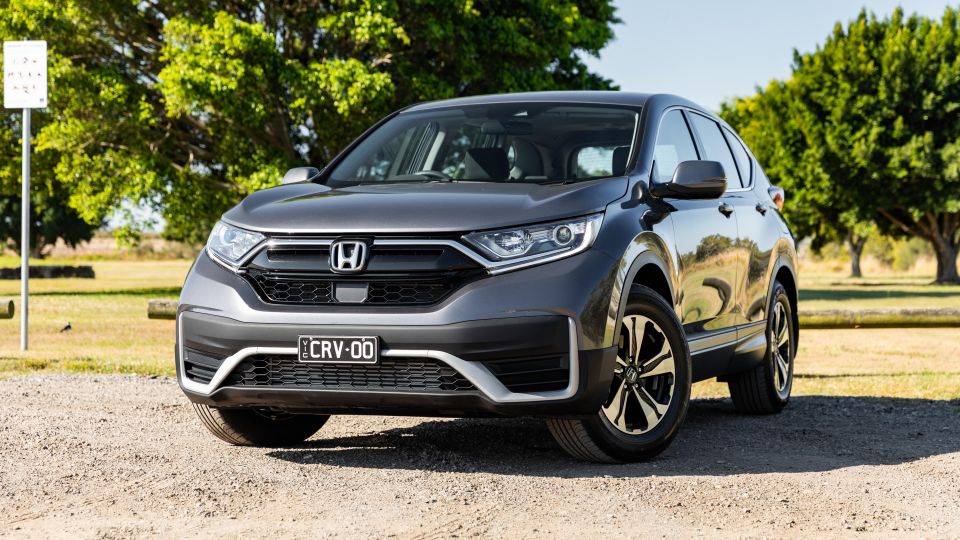
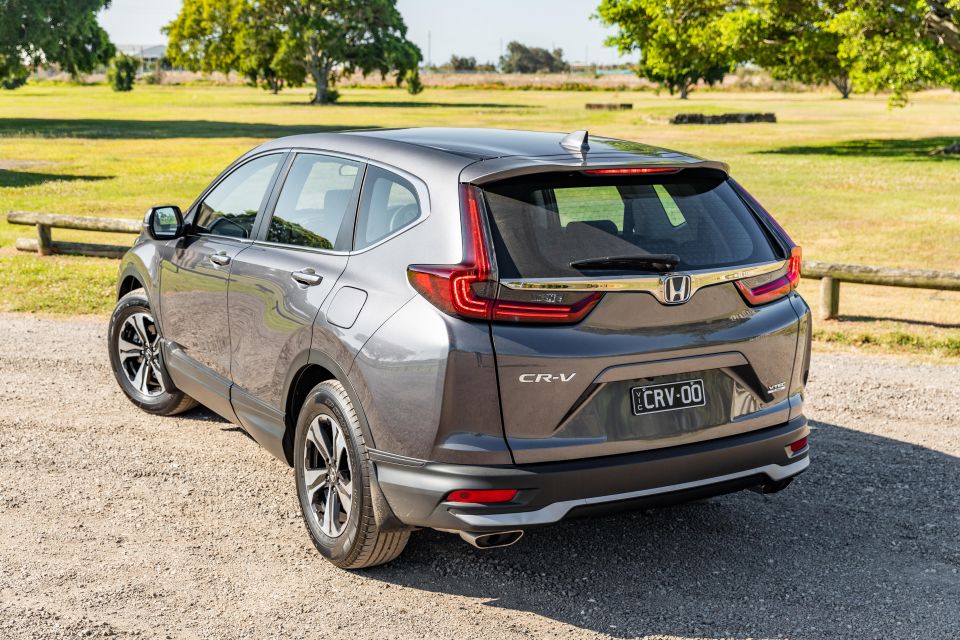

News Editor
New from
$30,490
excl. on-roads

News Editor
New from
$30,490
excl. on-roads


News Editor
New from
$30,490
excl. on-roads

News Editor
New from
$30,490
excl. on-roads
Quickly see how this car stacks up against its competition. Select any benchmark to see more details.
Take advantage of Australia's BIGGEST new car website to find a great deal on a Honda CR-V.
If you want a seven-seat SUV for under $45,000, you don’t have many options. One of them is the Honda CR-V VTi 7.
The other most obvious options are the Mitsubishi Outlander and Nissan X-Trail, while the base Mazda CX-8 also slides in under that price cap.
There’s also larger fare like the LDV D90 and Haval H9, with the Mahindra XUV500 an even more left-field option.

The VTi 7 is one of two seven-seat CR-V variants, and like the rest of the CR-V range they now feature nationwide drive-away pricing and Honda’s new dirt-cheap servicing.
The Honda CR-V has always been a safe, middle-of-the-road offering. That’s exemplified by its styling, which is handsome if not particularly memorable – the last three generations of CR-V all blur together for me stylistically, but comfortably blend into the scenery without offending.
For 2021, the CR-V received some exterior revisions and a restyled centre console.
It has the advantage of being newer and fresher than the ageing X-Trail, though the new Outlander has just launched, and a redesigned X-Trail is due sometime in 2022.
The VTi 7 is the cheapest way to get into a seven-seat CR-V. It’s priced at $40,300 drive-away under Honda’s new Price Promise fixed pricing scheme, with premium paint carrying no extra charge.
Honda also offers a plusher VTi L7 for $48,700 drive-away. Both models are front-wheel drive, with all-wheel drive restricted to the two-row CR-V.
Very few mid-sized SUVs offer the option of a third row. Nissan sells two seven-seat variants of its X-Trail, due to be replaced next year. The ST is $34,265 before on-road costs, while the ST-L is $40,125 before on-roads.
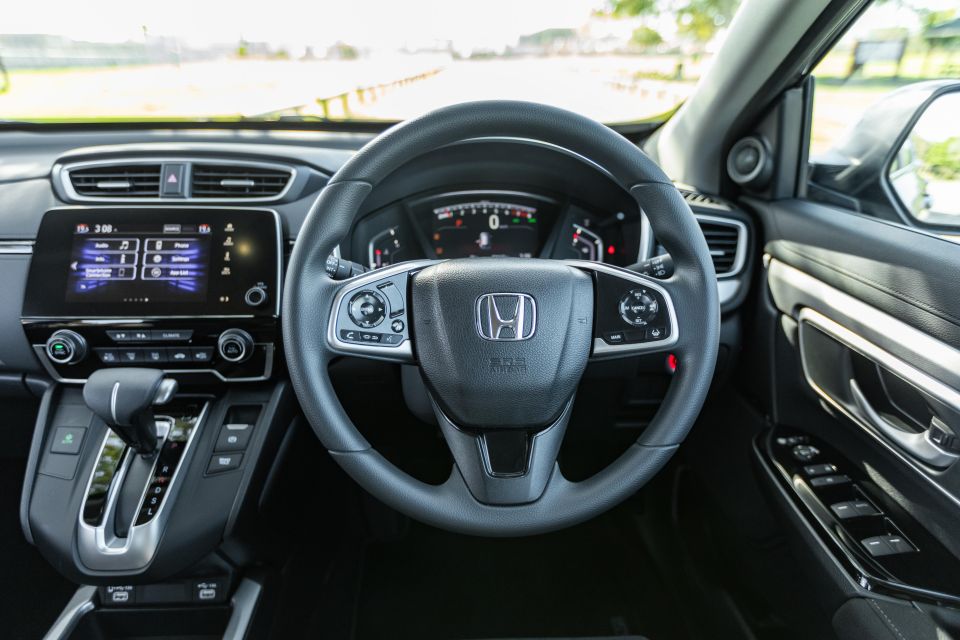
The Mitsubishi Outlander offers a third row in both the current generation and upcoming, redesigned model now arriving in Australian showrooms.
The cheapest three-row Mitsubishi Outlander model is priced at $35,490 before on-roads.
The Mazda CX-8 is classified in VFACTS as a large SUV, but it’s closely related to the mid-sized CX-5. Its range opens at $39,990 before on-roads. You’ll pay closer to $50,000 drive-away for the likes of a base Hyundai Santa Fe or Kia Sorento.
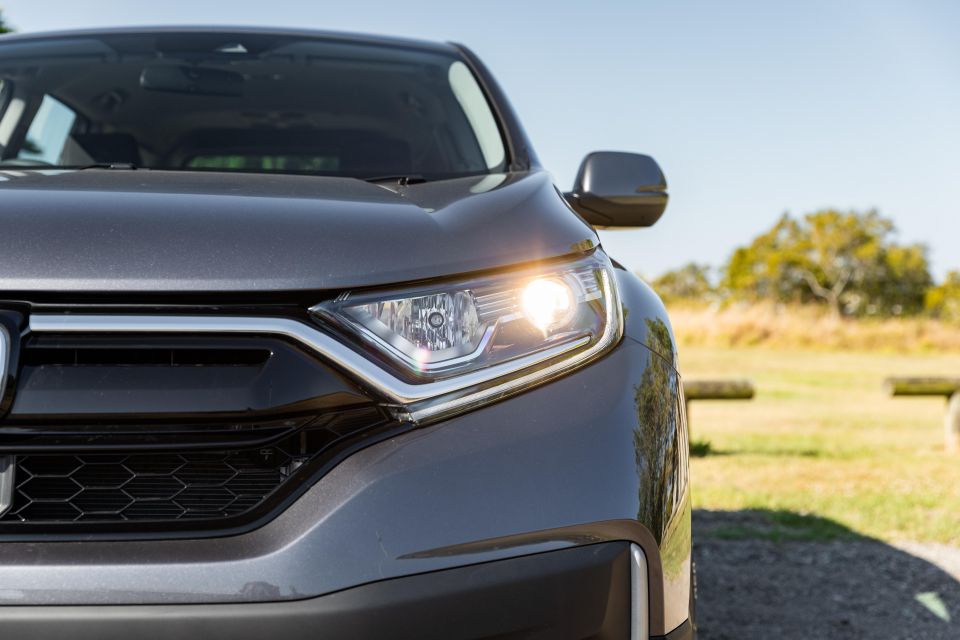

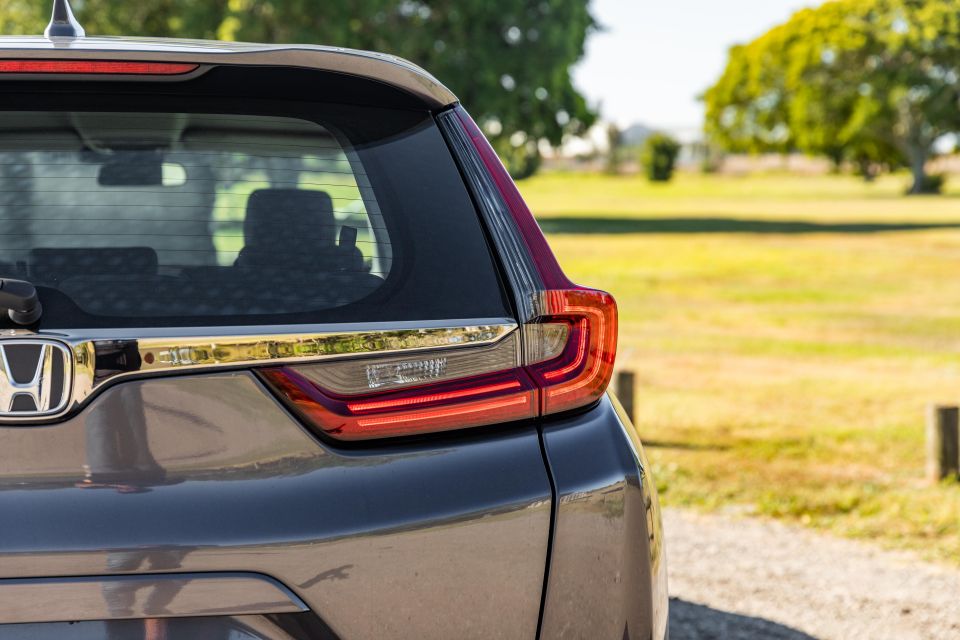
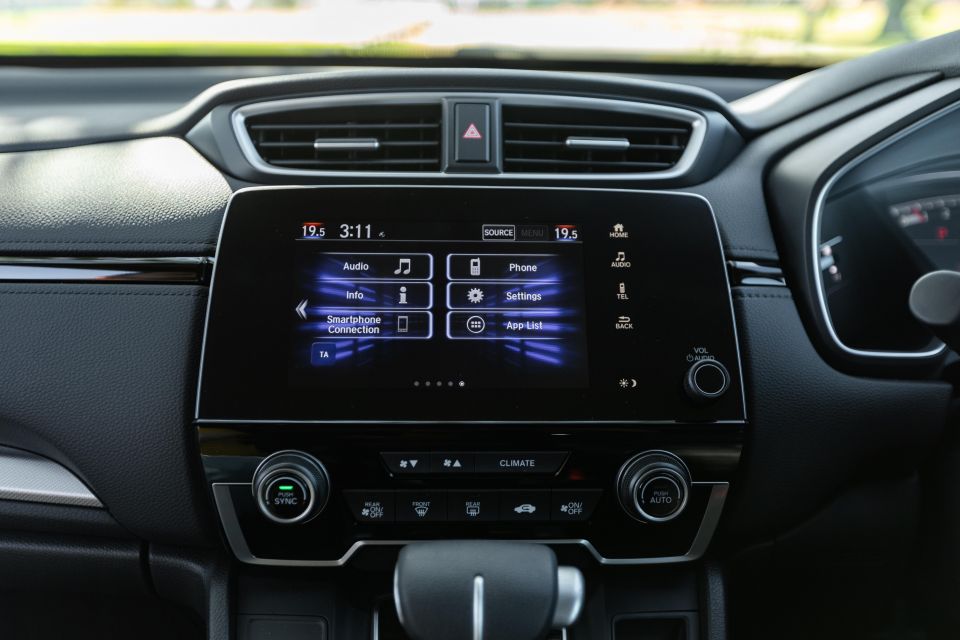
There are some baffling feature omissions on the VTi 7.
To get automatic headlights, something standard on even the cheapest Kia Picanto, you need to step up to the VTi X. That trim level also gives you a leather-accented steering wheel, something standard on every Hyundai Tucson and Toyota RAV4.
There are also no parking sensors front or rear on the VTi 7, only a reversing camera. Again, that’s all exclusive to the VTi X and up, though rear sensors are at least an accessory option.
What you do get on the VTi 7, however, are key features like adaptive cruise control, dual-zone climate control and keyless entry and start.
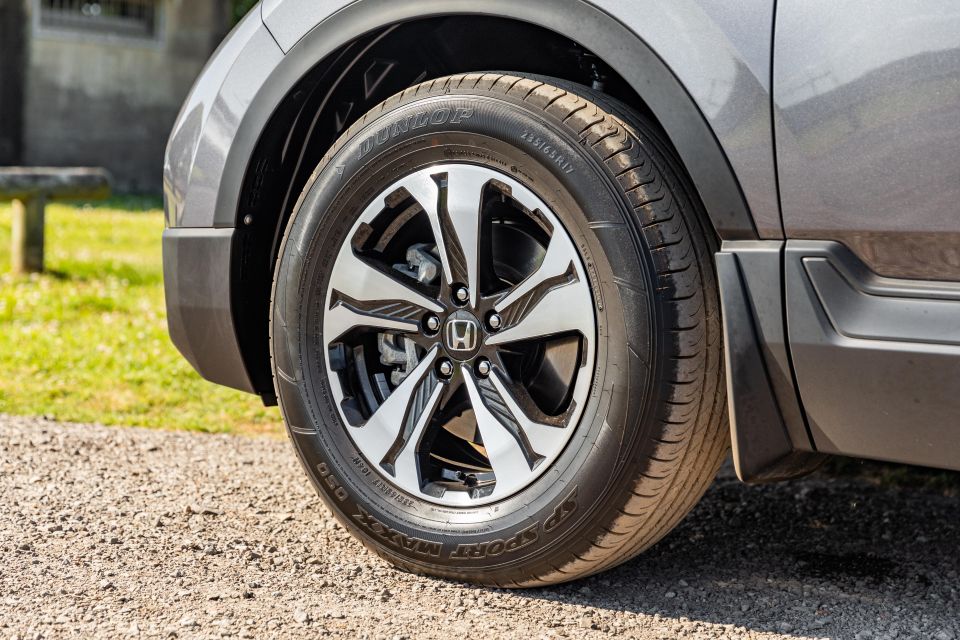
The 7.0-inch touchscreen infotainment system features wired Android Auto and Apple CarPlay, though you need to step up to the VTi X to get satellite navigation.
There are no LED headlights, with the CR-V featuring projector-type halogens albeit with LED daytime running lights. The alloy wheels measure 17 inches, and there’s a full-size alloy spare.
There are two USB-A outlets up front on all CR-Vs, with the VTi and VTi 7 scoring a 12V outlet for the centre console plus two USB-A outlets in the rear.
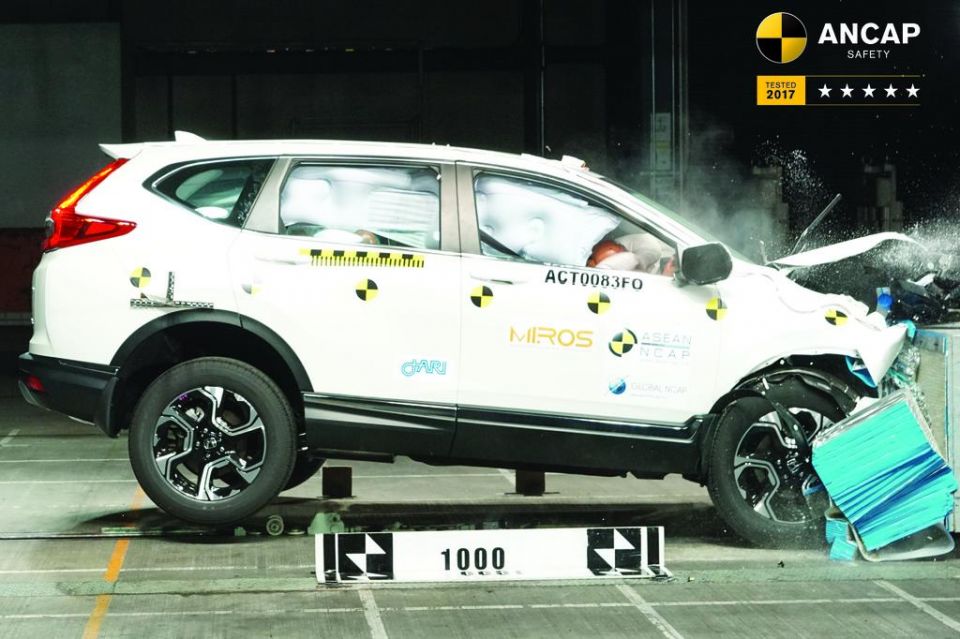
The CR-V has a five-star ANCAP safety rating, on the back of testing conducted in 2017. It received whiplash and pedestrian protection ratings of Good and Acceptable, respectively, plus an overall score of 35.76 out of 37.
Honda may have added its Honda Sensing suite to all turbocharged CR-Vs for the 2021 model year, but that doesn’t mean the CR-V VTi 7 is the equal of similarly-priced mid-sized SUVs when it comes to standard safety equipment.
There’s no blind-spot monitoring, for example, or rear cross-traffic alert. Both features are standard on every Toyota RAV4, while every Hyundai Tucson has active blind-spot and rear cross-traffic assist systems. The redesigned Mitsubishi Outlander also features a full complement of active safety technology, though the base ES misses out on rear cross-traffic alert and reverse AEB.
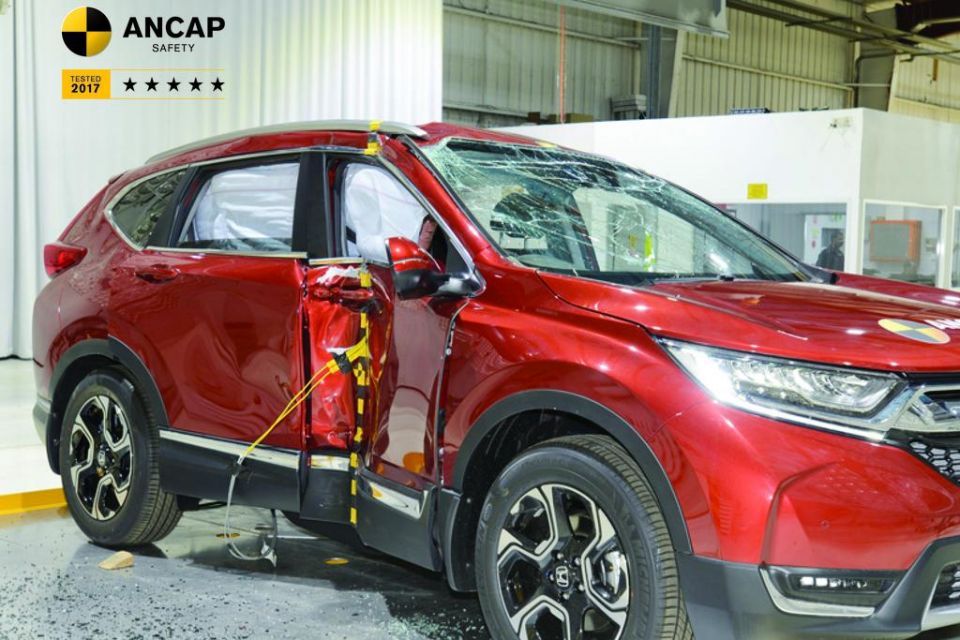
You do get two different lane assist systems, which Honda refers to as road departure mitigation and lane-keep assist. The former is an automatically-activated system that provides a gentle nudge if you try to cross a road line, the other is a system you activate via a button on the steering wheel that more forcefully keeps you within your lane.
The features list is rounded out with autonomous emergency braking with pedestrian detection, adaptive cruise control, as well as front, front-side and curtain airbags. The curtain bags extend to cover the third row.
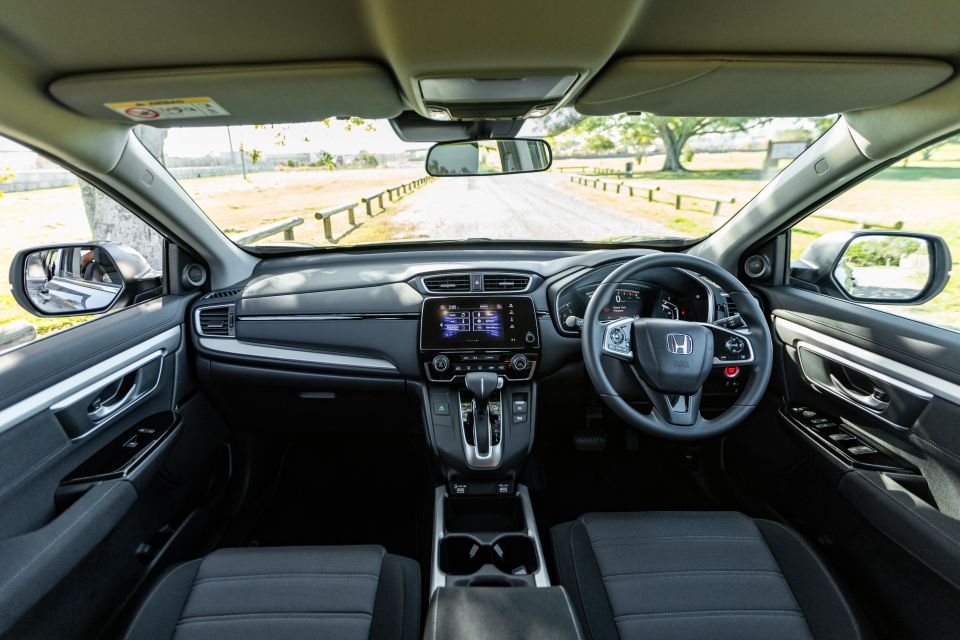
The CR-V boasts a thoughtful, well-presented interior. Everything is easily accessible and neatly laid out, though some newer rivals like the Tucson have come along with flashier cabins.
The likes of the Tucson also offer much slicker infotainment systems, because the CR-V’s is dated in appearance. That applies to both the user interface and also the overall size of the screen, a once satisfactory 7.0 inches in a segment where screens as large as 12.3 inches are available.
Response times also aren’t as snappy as newer systems in rivals like the Tucson, while the reversing camera footage is rather low resolution. There’s no satellite navigation, though fortunately there’s (wired) Android Auto and Apple CarPlay.
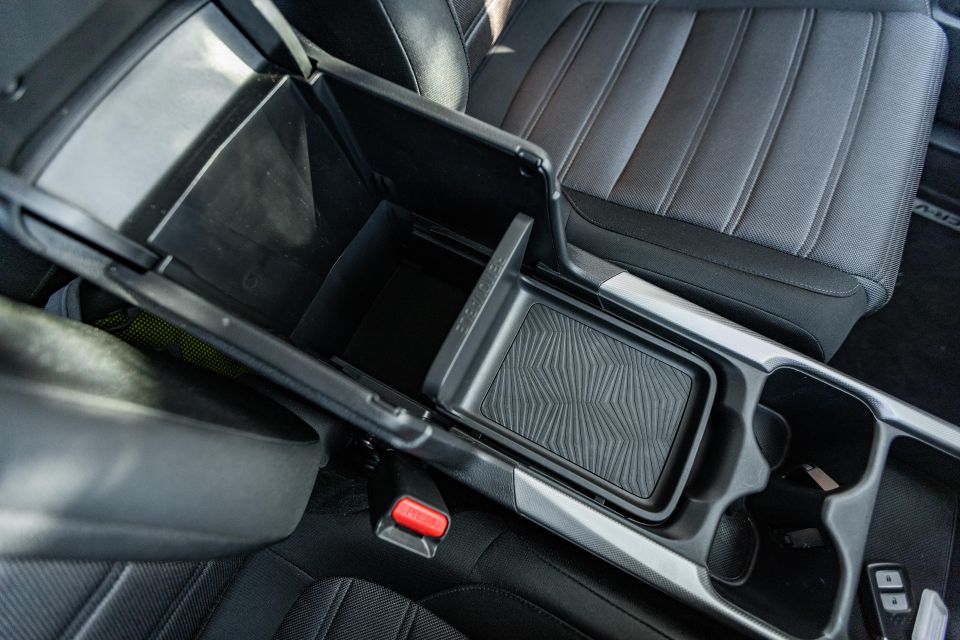
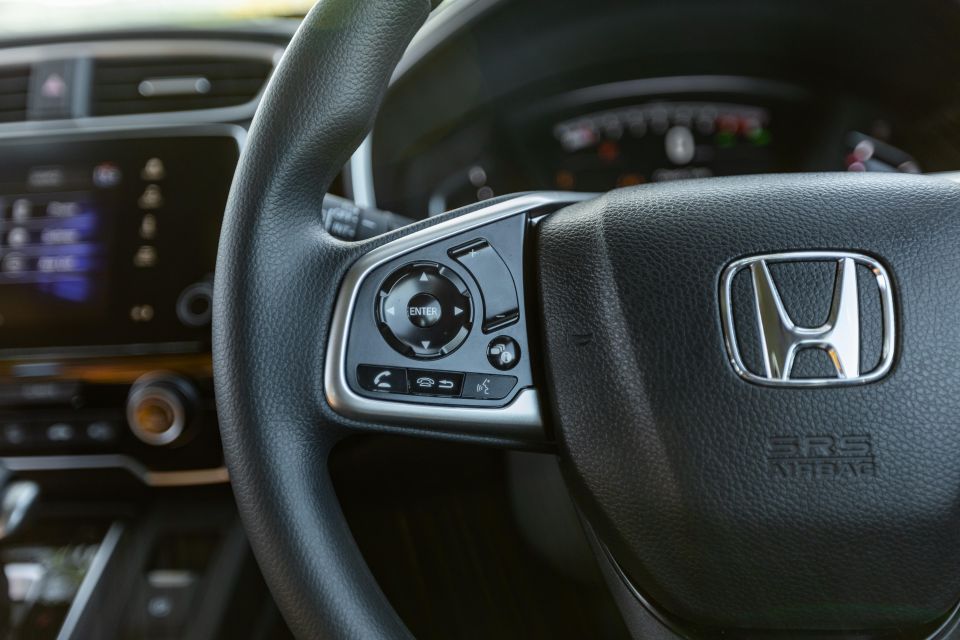
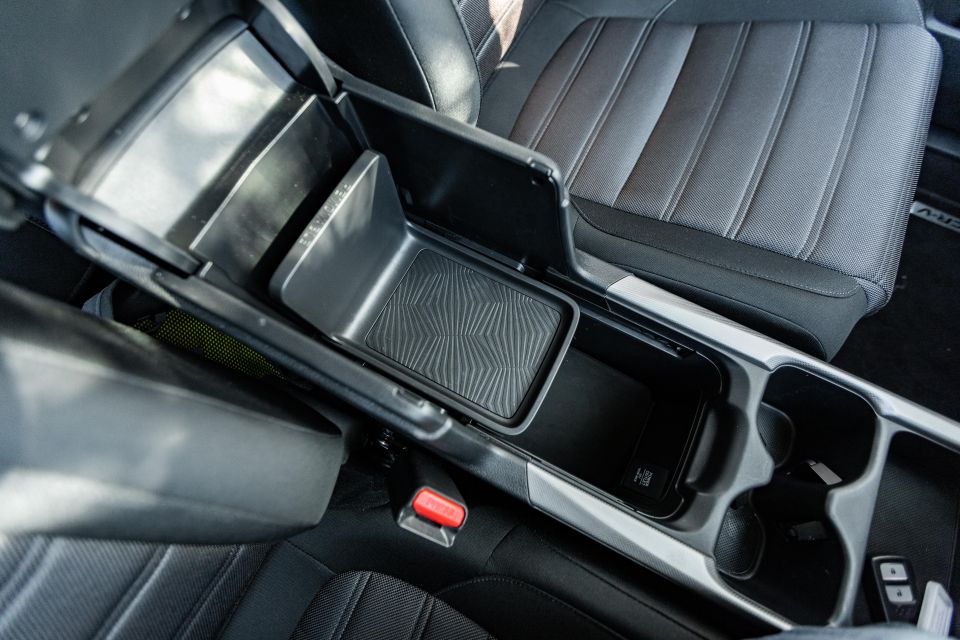

There’s soft-touch material with attractive stitching details on the dashboard and doors, accented with metal inserts that don’t look like painted plastic. The centre stack juts out and on either side you’ll find leatherette material, which is a nice touch your knees will appreciate. We also like the fold-down “conversation mirror”, which helps you keep an eye on rear-seat occupants.
The centre console is clever. It’s enormously deep, while a sliding (and removable) L-shaped plastic insert allows you to either have an exposed ‘pit’ of sorts or cover it over to form a conventional centre console bin. Ahead of this storage area are two cupholders, plus a recess that may fit some non-jumbo mobile phones; in higher-grade CR-Vs it’s where a wireless charging pad would sit.
Indeed, cabin storage is one of the CR-V’s strong suits. Each door has an amply-sized bottle holder plus a cut-out large enough to fit a can. All up, Honda has included 10 cupholders in the VTi 7’s cabin.


The instrument cluster is clear and legible. There’s a large centre screen flanked by two gauges for the fuel level and engine temperature, with the screen boasting a digital speedometer.
The cloth seats are comfortable and feel hard-wearing, and they look similar to the leather seats in the top-spec VTi LX in their design. Indeed, up-spec models don’t look much different inside from the VTi 7 – the cluster, soft-touch areas, and metal trim are all identical, for example.
Honda boasts the rear doors open 90 degrees, and indeed it’s easy to access the spacious and comfortable second row. There’s ample headroom and legroom back here, and you can slide the bench fore and aft to free up more room for the third row’s occupants. There are also air vents and USB-A outlets here.
The front seatbacks are upholstered and feature map pockets, while there’s a centre armrest with cupholders.

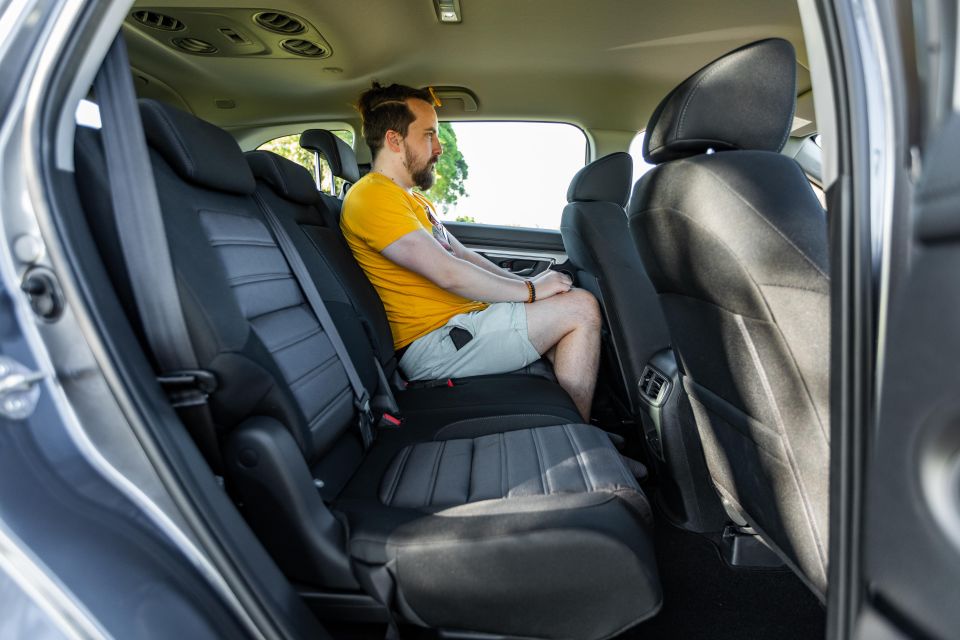
There’s a very specific use case for the third-row seats: children too big for a car seat but who have not yet become lanky teens. There are technically two boot-floor anchor points for child seats back here but it’s too awkward installing a child seat or constantly strapping and unstrapping a child back here.
An adult measuring 180cm or so won’t be comfortable back here, not by a long shot. Toe room is limited, while the roof drops down significantly cutting into headroom.
You wouldn’t want to do anything beyond a short trip, while the awkward access means you won’t want to stick nanna back here when she comes for a drive with you and the kids. But, the third row isn’t intended for adults.
Credit to Honda, however, for giving the third row not only roof-mounted air vents, but also controls to adjust the fan speed back there. However, those occupants who’ll be most comfortable back here will have the most trouble reaching those roof controls.
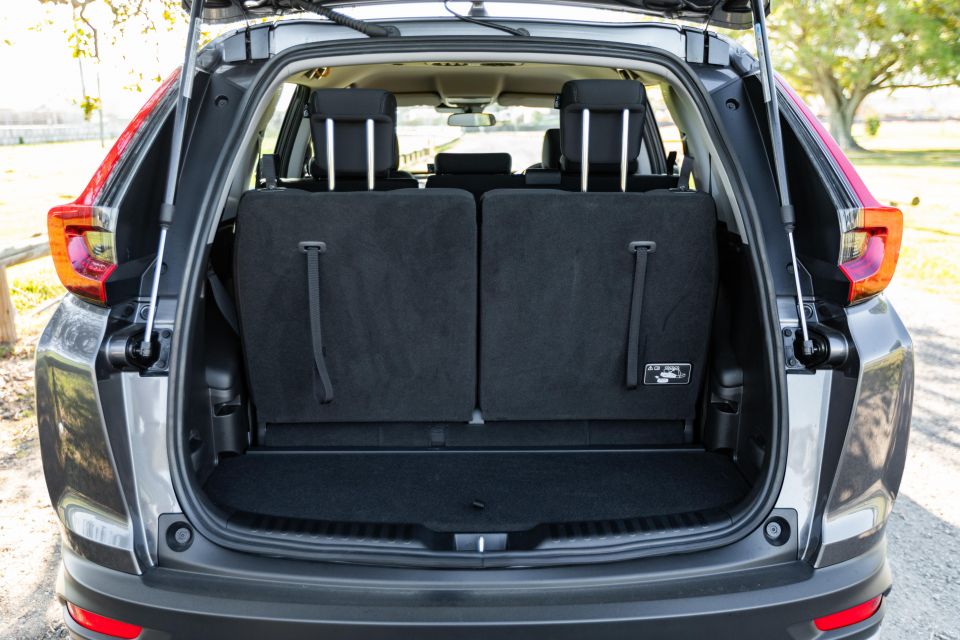
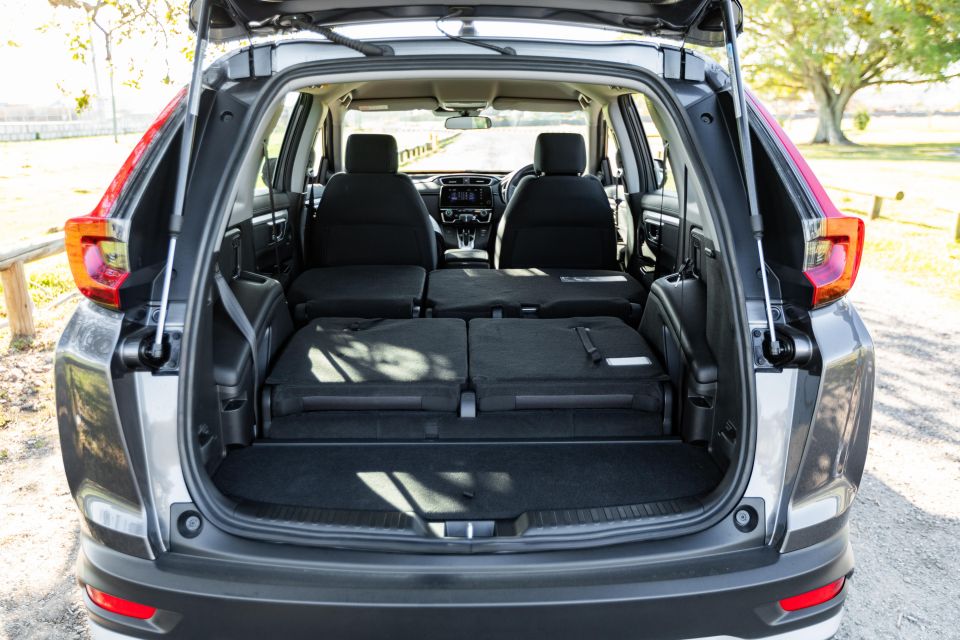
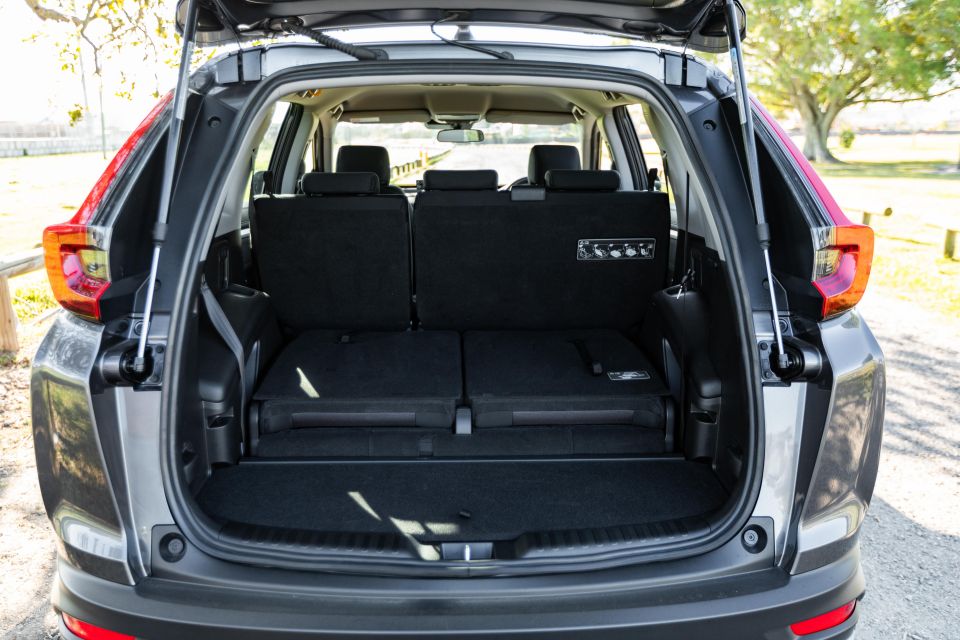
The boot-mounted anchor points complement the three top-tether and two ISOFIX anchor points (one on each outboard seat) in the second row.
Open the tailgate and you’ll find 150L (VDA) of space. Drop the third row and this expands to 472L, while there’s 936L of space with the second and third rows folded measured to the window line or 1509L measured to the roof.
Luggage space is comparable to the three-row X-Trail and Outlander, however the third row doesn’t fold flat into the floor, which could make loading longer items a little awkward. Under the boot floor is a full-size alloy spare.
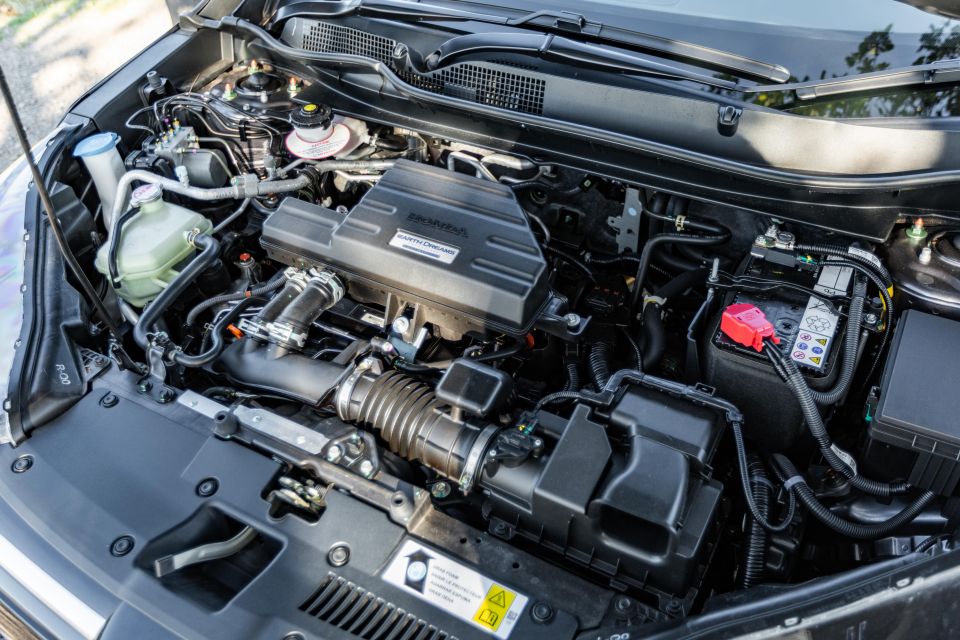
All CR-Vs bar the base Vi run a turbocharged 1.5-litre four-cylinder engine. This produces 140kW of power at 5600rpm, while maximum torque is 240Nm between 2000rpm and 5000rpm.
It’s mated with a continuously-variable transmission. The VTi 7, like the VTi L7, is front-wheel drive – if you want an all-wheel drive CR-V, you have to forego the third row.
Honda claims a combined cycle fuel economy figure of 7.3L/100km for the VTi 7. Over our test loop, which comprises inner-city, suburban and highway driving, we averaged 7.7L/100km though this crept up to 9.3L/100km over the course of a week. The CR-V requires only 91 RON regular unleaded fuel.
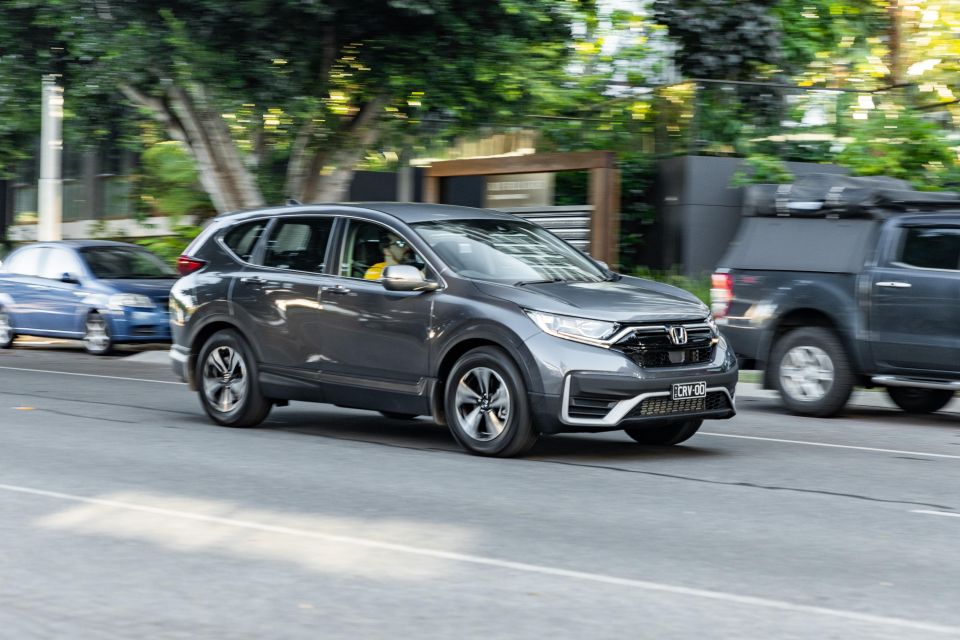
The CR-V feels quick on its feet. Peak torque is available from a low 2000rpm up to 5000rpm, and the CVT works well at keeping the CR-V feeling sprightly.
You rarely have to punch the CR-V to keep up in traffic, though if you do you’ll encounter some of the rev flare CVTs are known for and things can get a bit noisy. In normal driving, however, the CVT doesn’t drone or flare too much.
The CR-V is therefore quite comfortable to drive, with a powertrain you rarely have to wring to extract the most from and one of the more well-weighted, feelsome steering set-ups in this segment. The steering makes the CR-V feel more engaging to drive than some rivals, but it’s still sufficiently light to make manoeuvring a breeze.

Ride quality is hard to fault. Larger ruts and bumps can be felt but they won’t shudder through the structure, and body control is superb even at high speeds.
Out on the highway, road and wind noise is kept to a minimum and the adaptive cruise control and road departure mitigation make long distance drives a doddle.
There are few mid-sized SUVs that can be described as genuinely engaging to drive but, while the CR-V isn’t as enjoyable as, say, a Mazda CX-5, it isn’t a sloppy handler either. There’s some modest body roll in corners but it’s overall a safe and predictable steer.
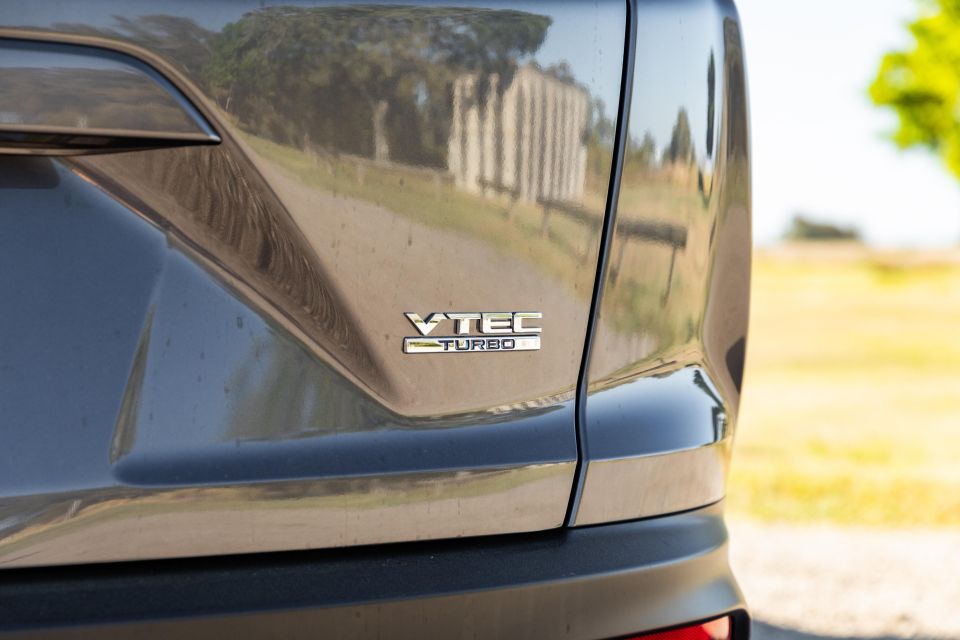
Servicing intervals are on the short side at 12 months or 10,000km, whichever comes first, but service pricing is dirt cheap for the segment.
Among the changes Honda has made to its dealer model from July 1, 2021, it’s slashed the prices of the first five services to just $125 a pop.
That means the CR-V costs just $625 to service over the first five years, down from $1560 previously. Even Toyota can’t quite beat that, capping the first four RAV4 services to $215 each albeit with a more generous 12-month/15,000km servicing interval.
The CR-V is covered by a five-year, unlimited-kilometre warranty.
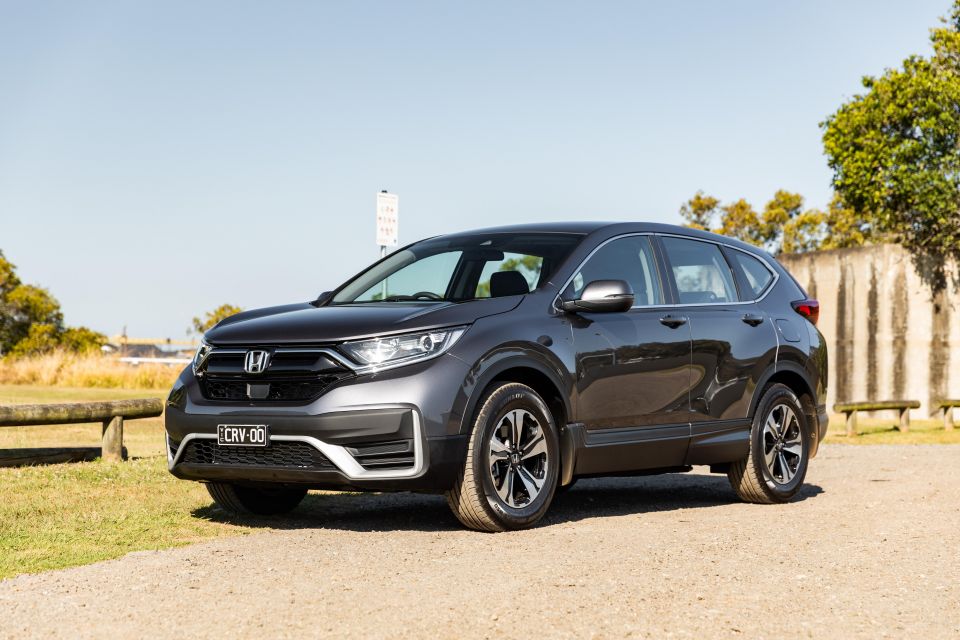
The Honda CR-V arguably needed just a couple more tweaks at its most recent update – an upgraded infotainment system and a reshuffling of standard equipment.
For now, it still stands up well against rival three-row mid-sizers like Nissan X-Trail, but that’s soon to be replaced by a newer, more sophisticated model.
Its infotainment system is adequate, and fortunately there’s smartphone mirroring, but the omission of features like automatic headlights, blind-spot monitoring and parking sensors is disappointing on a family SUV costing $40,000.

Otherwise, the CR-V continues to impress with its pleasant road manners, well-sorted powertrain and spacious and practical interior.
The third row is only for small kids, but the inclusion of child-seat anchor points, vents, air-conditioning controls and curtain airbag coverage back there makes it less of a penalty box than you might expect.
Throw in some of the cheapest servicing prices on the market and the CR-V still stacks up well as a family SUV.
It’s going to have its work cut out for in 2022, though, with those fresh new rivals…

Click the images for the full gallery
MORE: Everything Honda CR-V
Take advantage of Australia's BIGGEST new car website to find a great deal on a Honda CR-V.
William Stopford is an automotive journalist based in Brisbane, Australia. William is a Business/Journalism graduate from the Queensland University of Technology who loves to travel, briefly lived in the US, and has a particular interest in the American car industry.


Matt Campbell
2 Months Ago
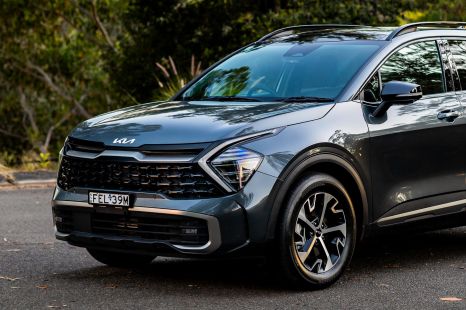

Matt Campbell
1 Month Ago
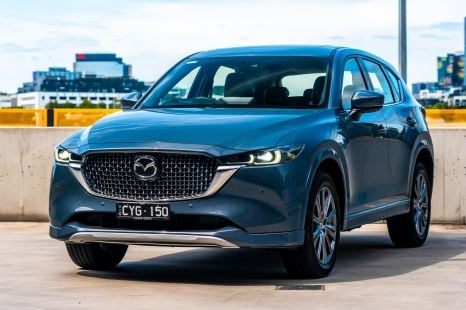

Max Davies
28 Days Ago
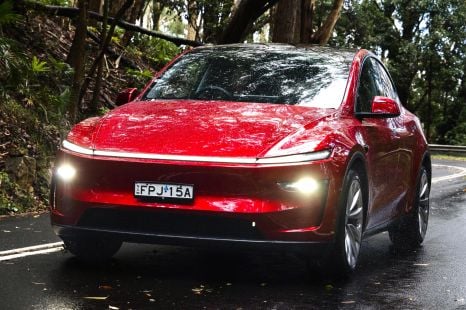

Max Davies
20 Days Ago


Derek Fung
9 Days Ago
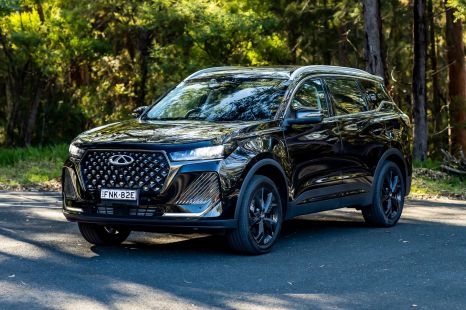

Matt Campbell
8 Days Ago